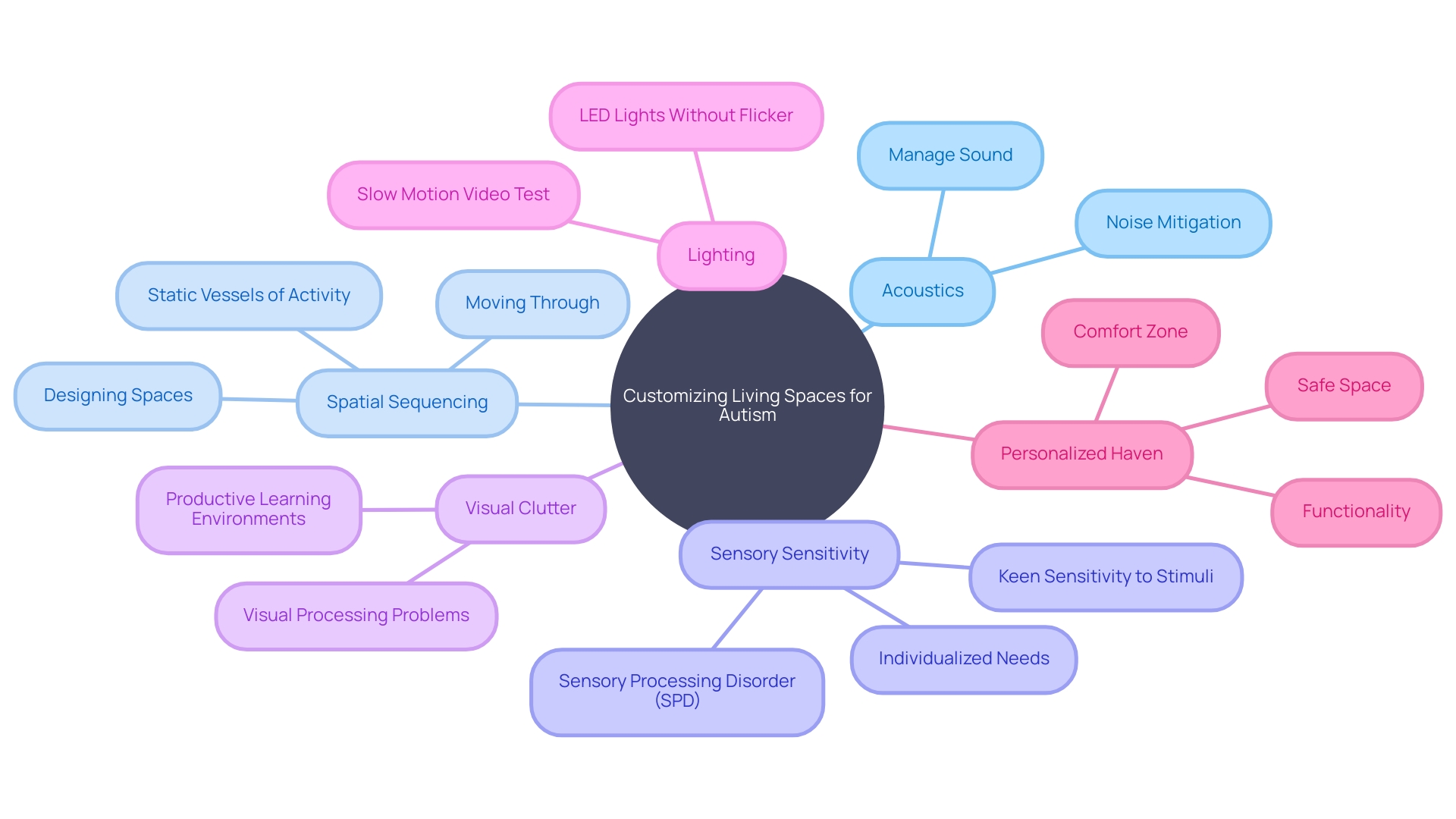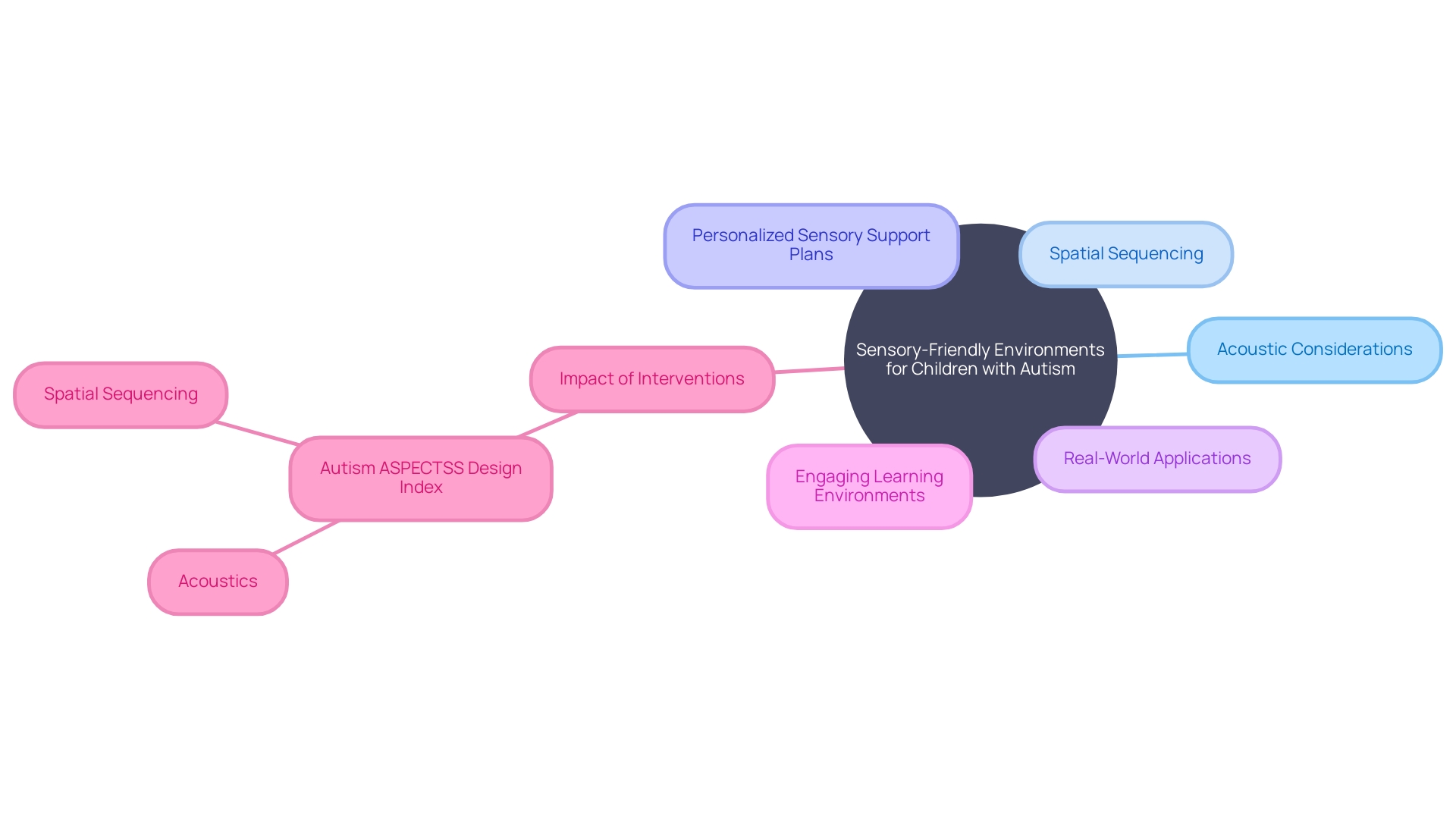Introduction
Navigating the world can be overwhelming for individuals with autism spectrum disorder (ASD), especially when it comes to sensory processing. Sensory overload, characterized by extreme responses to sensory stimuli, can greatly impact the lives of those with ASD. Understanding the underlying neural mechanisms and diverse sensory experiences of autistic individuals is crucial in providing the necessary support and accommodations.
Creating sensory-friendly environments and implementing strategies for managing sensory overload are key steps in empowering individuals with autism. By tailoring living spaces, providing sensory tools, and incorporating personalized accommodations, we can celebrate and respect the unique sensory experiences of individuals with autism. In this article, we will explore the importance of recognizing sensory overload symptoms, creating sensory-friendly environments, and implementing strategies for managing sensory overload.
Understanding Sensory Overload Symptoms and Signs
Exploring the world can be a daunting experience for individuals with autism spectrum disorder (ASD), particularly when it comes to processing stimuli. The prevalence of ASD in the adult population is now understood to be around 1 in 45, emphasizing the significance of recognizing the signs and symptoms that accompany this condition, including overload of the senses. This heightened state of receptiveness can be displayed through a range of actions, such as an intense reaction to stimuli like sound, brightness, or contact, and might lead to the avoidance of specific textures or surroundings. It's not uncommon for those who experience overload of the senses to have intense meltdowns or exhibit difficulties in sustaining attention or remaining calm in environments that people without sensory processing issues might not consider challenging.
Understanding that autistic individuals often operate with a bottom-up processing style can shed light on why they might excel in pattern recognition but find it challenging to filter out irrelevant information. Such insights are crucial, as research continues to investigate the underlying neural mechanisms that contribute to hypersensitivities in ASD. For instance, groundbreaking studies focus on the auditory system to understand better the shared neural circuitry that might explain the commonality of symptoms in ASD, such as auditory hypersensitivity. This sensitivity can considerably impact quality of life, especially in bustling, noisy settings like shopping centers or public transportation, where filtering out excessive sensory input is necessary.
It is crucial to recognize that the lived experiences of autistic people are diverse and multifaceted. Systematic reviews of qualitative research, incorporating the voices and perspectives of autistic children and young people, are invaluable. They offer a systematic method to comprehend the perceptual world of people with Autism Spectrum Disorder. By means of thematic synthesis, these studies provide a more profound understanding of the experiences that influence the lives of individuals on the autism spectrum, highlighting the significance of support systems that honor and cater to their distinctive processing requirements.
Creating a Sensory-Friendly Environment
Customizing a living space to accommodate processing differences is a considerate approach to enhancing comfort and reducing stress for individuals with autism. The Autism ASPECTSS Design Index, a groundbreaking framework for creating autism-friendly settings, highlights the significance of acoustics, proposing that reducing noise can greatly enhance the atmosphere for individuals with sensory sensitivities. Incorporating this insight, one could start by addressing the auditory surroundings, ensuring that any persistent or sudden noises are minimized or eliminated to create a serene auditory landscape.
Visual clutter is another aspect to consider, as it can overwhelm the senses. This can be managed by opting for a clean and organized space with minimal distractions. Dr. Temple Grandin, a respected champion for people on the autism spectrum, emphasizes the significance of non-flickering LED lights, which can be a subtle yet vital aspect in establishing a comfortable visual setting.
Spatial sequencing also plays a vital role; by thoughtfully designing a space that allows for intuitive movement and experience, the environment becomes more predictable and less stressful. These adjustments, in addition to dedicated calm areas, can create a sanctuary that promotes regulation of the senses, empowering individuals with autism to flourish in their personalized haven.

Strategies for Managing Sensory Overload
For children with autism, processing input can be a complex and nuanced experience. Deep pressure techniques, such as using weighted blankets or compression clothing, are just one of the numerous strategies that can help in managing overload. Offering tools like fidget toys and noise-canceling headphones can also be advantageous, providing a way to alleviate overwhelming input. Visual aids and narratives can prepare children for environments rich in stimuli, and techniques for relaxation like deep breaths or mindfulness exercises contribute to their capacity to regulate sensory encounters. These approaches, based on the viewpoints of individuals with autism themselves, are backed by a thematic synthesis of qualitative research, guaranteeing that they tackle the practical difficulties these individuals encounter. As mentioned in a thorough evaluation that encompassed the examination of 50-100 studies, the perspectives of individuals with autism offer valuable understanding into successful strategies for managing sensory experiences. By incorporating these approaches, individuals with autism can enhance their ability to navigate their surroundings and minimize the effects of excessive stimulation.
Providing Sensory Tools and Accommodations
Enabling children with autism to handle processing issues involves considerate modifications to their everyday environments and routines. The Autism ASPECTS Design Index serves as proof of this approach, providing evidence-based design guidelines that prioritize acoustic considerations to mitigate noise—a common trigger recognized by parents, teachers, and individuals with autism themselves. Alongside acoustics, spatial sequencing is another essential element, emphasizing the need to create spaces that are not just areas of activity but are also navigable and comfortable for those on the spectrum.
Design adjustments must also consider the varied tolerances among autistic people. For example, introducing an AR application that translates tactile sensations into visual and auditory signals can be revolutionary for those distressed by physical textures or vibrations. Such innovative solutions underscore the importance of personalized sensory support plans that cater to the specific sensory profiles of each individual.
Real-world applications of these principles can be seen in various settings. In a dental office, addressing the tactile sensitivity of autistic patients is crucial for a comfortable experience. This could mean adjusting the surroundings to minimize distressing stimuli or using technology to present these stimuli in a more tolerable format.
Educational spaces, too, can benefit from these insights. An engaging learning environment for an individual with autism might involve a multisensory approach that allows for movement and creative expression, as seen in the example of a classroom transforming into a sensory-friendly landscape gardening project.
Furthermore, activities that engage the senses are not only advantageous, but they are also crucial for developmental progress in domains such as language and motor skills, while also promoting social skills and self-regulation. Engaging in activities that stimulate the vestibular and proprioceptive systems can be particularly soothing and pleasurable for individuals facing challenges with processing information from the senses.
The impact of these interventions, however, must be critically evaluated. Research has shown that many studies on non pharmacological interventions for individuals with autism contain design flaws, limiting our understanding of their effectiveness and potential risks. Yet, the influence of the autistic community has been pivotal in highlighting these issues and advocating for research practices that respect their needs and experiences.
When advocating for a child's sensory needs, the fusion of evidence-based design principles, personalization of sensory support, and the integration of technology can create environments that not only accommodate but celebrate the unique sensory experiences of individuals with autism.

Conclusion
In conclusion, recognizing and understanding sensory overload symptoms in individuals with autism spectrum disorder (ASD) is crucial for providing support and accommodations. Sensory-friendly environments and strategies for managing sensory overload empower individuals with autism to navigate their surroundings more effectively.
Tailoring living spaces to accommodate sensory processing differences, such as addressing acoustics and visual clutter, creates a serene and predictable environment. Deep pressure techniques, sensory tools, and visual supports assist in mitigating overwhelming sensory input. Personalized sensory support plans that cater to individual needs are essential.
Real-world applications of these principles can be seen in dental offices and educational spaces. Engaging learning environments that incorporate a multisensory approach and sensory activities are vital for developmental growth and self-regulation.
While interventions for sensory needs require evaluation, the influence of the autistic community has been pivotal in advocating for research practices that respect their needs and experiences. By integrating evidence-based design principles, personalizing sensory support, and incorporating technology, we can create environments that celebrate the unique sensory experiences of individuals with autism.




